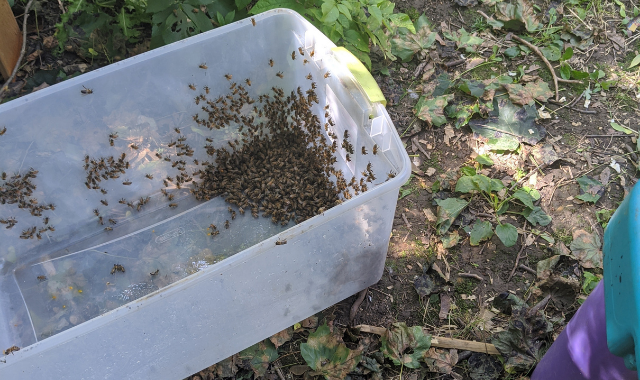So, last week, we had some dead bees out on the landing board of the hive.
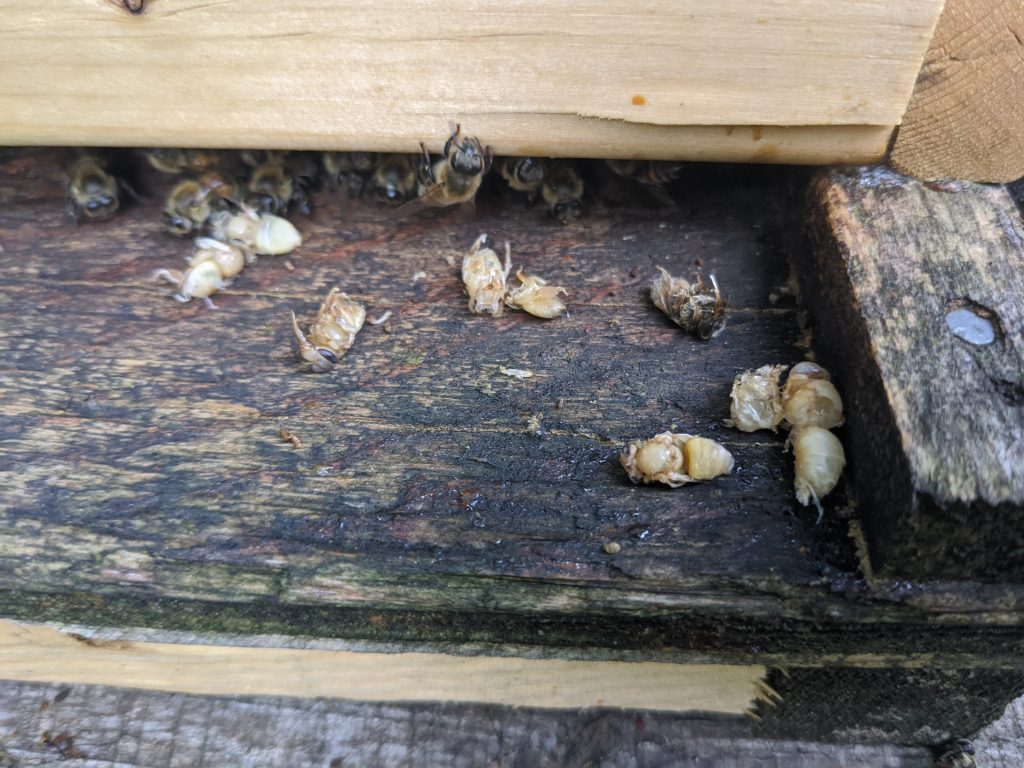
What was odd was that they were not fully grown bees. It seems as though the nurse bees pulled still-growing bees out of their cells and out of the hive. I asked around the beekeeping community, and there were a lot of opinions of what it could be. The two most likely are:
1) We had some cold nights and there were some brood too close to the entrance and they got too chilled.
2) They had mites and the bees actually detected them and pulled them out in order to try and kill the mites – which would be awesome.
So, we got back in the hive again today with a specific purpose in mind – we were going to do a mite count. Varroa Destructor Mites are these tiny little creatures that live on the bees and basically drink their blood. In so doing, they spread a lot of diseases. These mites are the big bad guys in beekeeping.
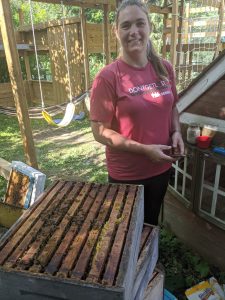
We’re still not sure at this point how to handle them. We don’t really want to use chemicals to treat the bees, but we also want them to survive. So, still researching there.
But, regardless, we figured we should count them. The basic method is simple. First, you open the hive. Here’s a picture of Christina, still happy – before she got stung. You have to take off all the top boxes first, because those are mostly honey and nectar.
Then you locate a frame of brood – were looking for brood because brood frames have nurse bees, and they’re the ones most likely to have mites on them, because the mites breed in the cells while the bees are growing and feed on them. So, we’re looking for a lot of nurse bees, and that means looking for brood.
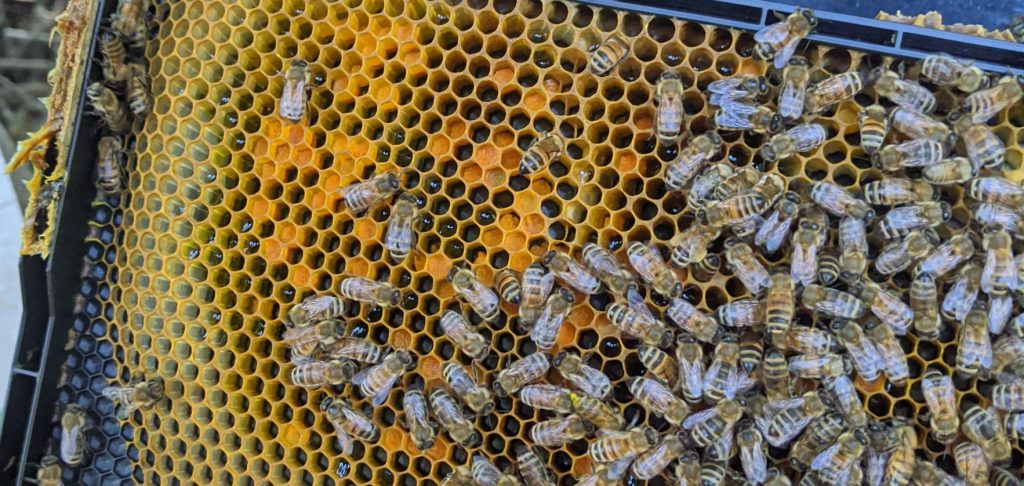
This is mostly pollen with some nectar, so not that.
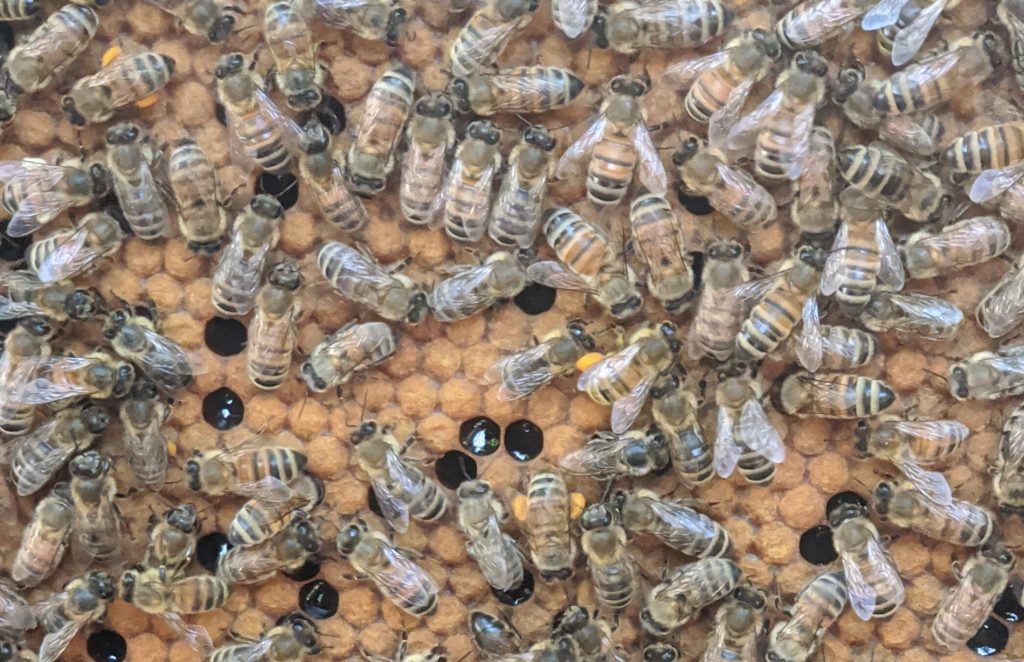
There we go, lots of brood, which means lots of nurse bees. Not all of them are though. You can clearly see some foragers here – they’re the ones with the yellow pollen on their legs – what we call “pollen pants”. Those ones have been out foraging and so aren’t what we’re looking for. But, not every forager has pollen pants, and even if they did, you don’t want to be picking out individual bees. After all, we need about 300 to do our test.
So, what we do is shake them all into a large container.
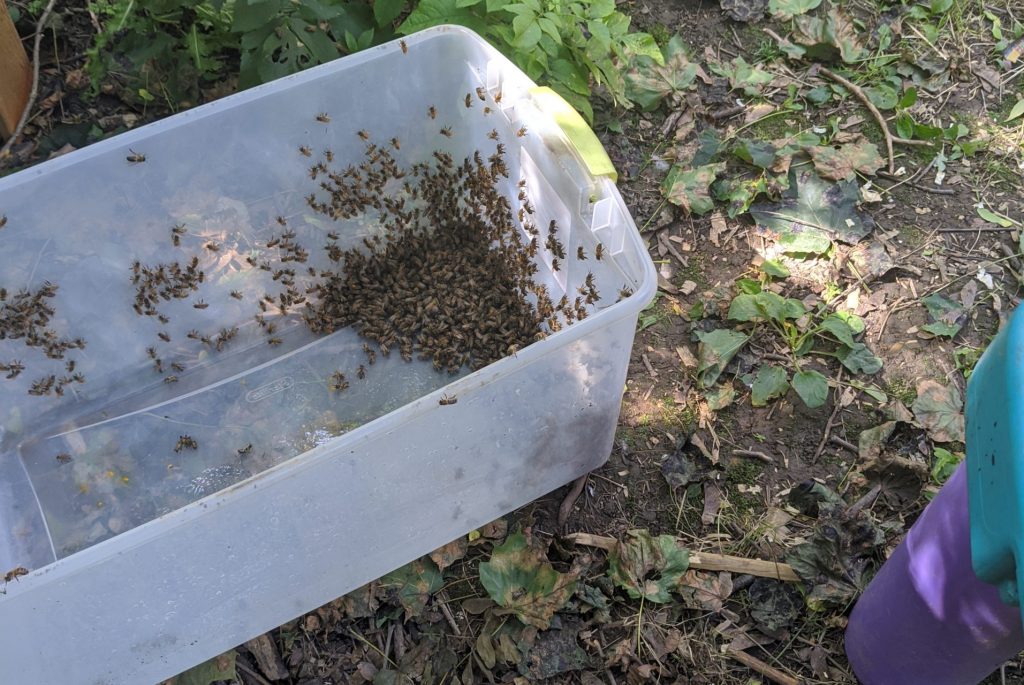
About two or three frames worth of bees. This is terrifying the do the first time, because they don’t really like being unceremoniously shaken off their frame into a container. But, what happens is that the foragers will almost immediately fly off and find their way home again. The nurse bees however have never been outside of the hive. They have no idea what to do, and so, being utterly disoriented and confused, they sort of just mill around looking for the hive by touch. Some crawl up the walls a bit, but just lie there in a puddle of bees.
By the way, this is what a nearly empty frame of brood looks like. At the colony’s population height, you usually can’t even see the cells underneath because of all the bees.
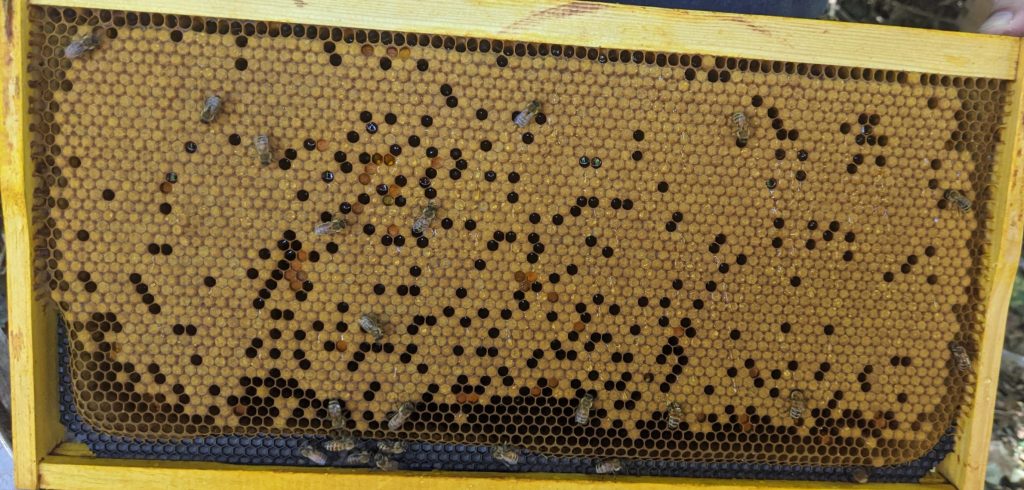
So, next you go and scoop up about a cup of bees with a measuring cup, which is about as weird an experience as it sounds. You take the cup of bees and put them in a mason jar with a lid that I’ve replaced with a screen mesh and a bunch of icing sugar.
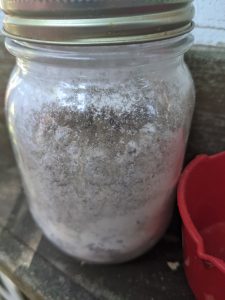
Why icing sugar? Well, the theory is that the powder is so fine, it sticks to the bees, which then the mites walk over and it sticks to their feet, and so then they can’t stick to the bees. I think. Or it’s that the dust is so find it interferes with the mite’s breathing and they die, but the bees are okay. Or maybe it’s both of those things. I’m honestly not sure.
Regardless, the point is, the mites fall off the bees.
Many beekeepers use alcohol instead, which absolutely kills the bees and the mites. It’s considered a more accurate count, but then you lose some 250 bees. Plus, we had icing sugar, and not alcohol, so icing sugar was an easy choice.
So, you put them in, shake it up, roll it around, and then you shake it out onto a white piece of paper. The icing sugar falls out along with the mites, and the bees stay inside, a bit shaken up. We counted a lot of mites. Honestly, we gave up at 14 or so. The acceptable number is 2 or 3. So, by all traditional beekeeping wisdom, we absolutely should use chemicals to kill the mites.
We’re not so sure yet. So, we’re holding off.
After that, you open the jar and dump them back into the hive. However, we definitely upset some bees by doing this. I’m still not exactly sure how. The bees in the jar should have been all nurse bees and unable to fly. Then again, that doesn’t mean they can’t sound an alarm. By whatever mechanism it happened, a bee came right out and stung Christina for her efforts.
So, she ran away to deal with that, and I did my best to get the hive back in order as fast as I could, because they were clearly not happy. They sound different when they’re upset, and the bees start flying a lot more aggressively around you. I took a couple breaks to let them cool off a bit, but you can’t really leave it all apart for long, so quick as I could, I put everything back together and left them alone.
And that was our experience at counting mites. Turns out, we have a lot of them!
Now, is that a problem? It’s hard to say. The standard opinion is that if you have mites, you have to get rid of them, or your hive is going to die. However, there is a small group of treatment free beekeepers who say “no, let them learn to deal with the mites”. Their view is that, yes, they mite die, in which case, they weren’t good bees to have. Try again next year. If they survive, well, then you have a bee colony that can survive mites – and that is worth a fair bit.
I don’t think I’m interested in selling bees at any point, but a colony that I don’t have to treat with chemicals – that sounds like a good thing to me, because that means fewer chemicals in the honey.

